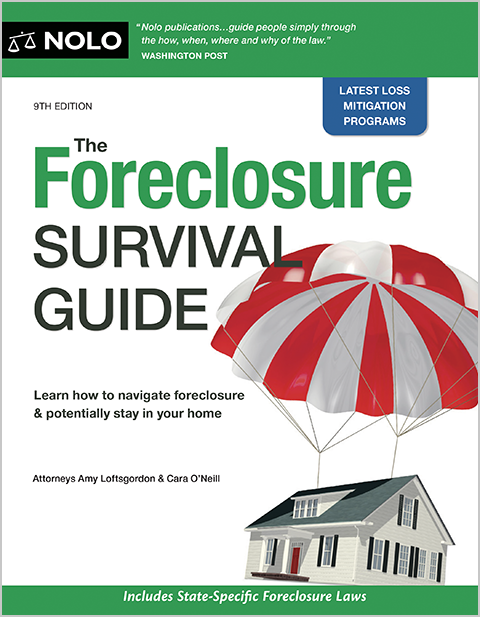Learn about FHA loss mitigation options, including forbearances, loan modifications, and partial claims to prevent foreclosure on your FHA-insured mortgage.
Homeowners with FHA-insured mortgage loans facing financial hardship have access to a range of updated loss mitigation options designed to help prevent foreclosure and retain their homes. The Federal Housing Administration (FHA), part of the U.S. Department of Housing and Urban Development (HUD), has streamlined its policies to include enhanced repayment plans, forbearance options, loan modifications, partial claims, short sales, and deeds in lieu of foreclosure.
Recent changes in FHA loss mitigation, including the end of COVID-era options and the expiration of the FHA-HAMP program, as well as the establishment of a new permanent loss mitigation framework, ensure borrowers have clear, effective ways to avoid foreclosure. If you have an FHA-insured mortgage loan, you have access to a range of loss mitigation options designed to help you avoid foreclosure and, in many scenarios, keep your home.
This article will guide you through the latest FHA foreclosure avoidance options, eligibility rules, and application guidance to maximize your chances of preventing a foreclosure.
What Is FHA Loss Mitigation?
Under HUD policy, the loan servicer must review a borrower who has an FHA-insured loan and is behind in payments or about to fall behind for loss mitigation alternatives (ways to avoid foreclosure) using a waterfall process. The term "waterfall" refers to a structured process that loan servicers must use to evaluate FHA-insured loans for foreclosure alternatives.
Loan servicers must evaluate all eligible borrowers with FHA-insured mortgages who are in default or facing imminent default using the loss mitigation waterfall process. Many courts have said that a servicer's failure to comply with HUD guidelines provides a defense to a foreclosure.
Understanding the FHA Loss Mitigation Waterfall Process in 2025
In FHA's general waterfall process, the servicer has to evaluate the borrower to determine which, if any, of the options below is appropriate to avoid foreclosure.
The servicer must evaluate the borrower for these loss mitigation alternatives in the following order:
- repayment plan
- forbearance
- standalone partial claim
- standalone loan modification
- loan modification plus partial claim
- payment supplement
- outside of the waterfall loan modification
- preforeclosure sale (short sale), or
- deed in lieu of foreclosure.
Once a borrower is eligible for a particular option, the evaluation stops. Be aware that you might need to complete a trial payment plan before getting approval for a loss mitigation home retention option. Also, you are limited to one permanent loss mitigation home retention option (partial claim, loan modification, combination loan modification and partial claim, or payment supplement) within any 24-month period, unless you are impacted by a presidentially-declared major disaster.
FHA Repayment Plan: Catch Up and Keep Your Home
The servicer will evaluate whether the borrower has enough income for a repayment plan. With a repayment plan, the lender temporarily increases the monthly payments by adding part of the overdue amount to the regular payments until the loan is current.
FHA Forbearance Option: Temporary Relief for Borrowers
Under a "forbearance" plan, the borrower makes reduced payments or doesn't make any payments for a specific amount of time.
How the FHA Partial Claim Program Works in 2025
A "partial claim" is an interest-free loan from HUD to get caught up on overdue payments. After getting a partial claim, the borrower is supposed to resume making their regular monthly payments. The loan doesn't have to be repaid until the first mortgage is paid off, like when you sell the property or refinance.
The partial claim amount can be up to 30% of the unpaid principal mortgage balance. You can get more than one partial claim, but the combined total amount can't be more than 30% of the unpaid principal mortgage balance.
FHA Standalone Loan Modification: Reduce Your Mortgage Payments
A "loan modification" is a permanent change to one or more terms in the borrower's mortgage. In a modification, the servicer might:
- lower the interest rate
- capitalize the delinquent principal, interest, or escrow amounts
- extend the time the borrower has to repay the mortgage, or
- re-amortize the balance due.
Combining a Loan Modification and a Partial Claim
Partial claims are sometimes completed along with a loan modification.
FHA Payment Supplement: Making Mortgages Affordable
The payment supplement option uses partial claim funds to bring the borrower's mortgage current. It also uses partial claim funds to temporarily reduce the principal portion of the monthly mortgage payment for 36 months without modifying the mortgage. The payment supplement is only repaid when the borrower sells or refinances the home, or the mortgage is otherwise extinguished.
Outside of the Waterfall Loan Modifications
This kind of modification is used when the standard modifications in the waterfall don't provide sufficient relief to make the borrower's monthly payments affordable.
FHA Preforeclosure Sale (Short Sale): Selling Below the Balance
A "preforeclosure sale" (short sale) is when the borrower sells the home for less than the amount owed on the mortgage loan. After an FHA preforeclosure sale, the lender can't get a deficiency judgment.
Deed in Lieu of Foreclosure with FHA Loans
With a "deed in lieu of foreclosure," the borrower voluntarily offers the home's deed to HUD in exchange for a release from all obligations under the mortgage. Following an FHA deed in lieu of foreclosure, the lender can't get a deficiency judgment. An analysis for a deed in lieu of foreclosure is the end of the waterfall.
FHA Disaster Relief and Foreclosure Moratoriums Explained
After a natural disaster, like a hurricane or wildfire, you might qualify for certain foreclosure protections, like a moratorium. Generally, you can qualify for a moratorium if you have an FHA-insured loan (or a Fannie Mae, Freddie Mac, or VA-guaranteed loan), and you meet specific criteria. HUD often provides a 90-day moratorium on foreclosures of FHA-insured home mortgages following natural disasters.
Other Help for FHA Borrowers After a Natural Disaster
In some cases, FHA offers loan modifications and forbearances to borrowers who have gone through a disaster and are struggling to make their mortgage payments.
Learn More About Disaster Relief for Borrowers With FHA Loans
To get more information about different options for homeowners after a natural disaster, go to FHA's Disaster Relief Options for FHA Homeowners website.
Frequently Asked Questions (FAQs) About FHA Loss Mitigation Options
What are FHA loss mitigation options?
FHA loss mitigation refers to a set of programs and options that the FHA offers to help borrowers with FHA-insured mortgages avoid foreclosure. These options include repayment plans, forbearances, loan modifications, partial claims, preforeclosure sales (short sales), and deeds-in-lieu of foreclosure.
Who is eligible for FHA loss mitigation programs?
Homeowners with FHA-insured mortgage loans who are experiencing financial hardship, such as job loss, reduced income, illness, or other challenges, may qualify for loss mitigation assistance. Eligibility requirements vary by program, so it's important to contact your loan servicer to discuss your specific situation.
How do I apply for FHA loss mitigation assistance?
Contact your mortgage servicer as soon as you anticipate having trouble making your mortgage payments. The servicer will review your financial situation and help you through the application process for available loss mitigation options. If you need help dealing with your loan servicer in the loss mitigation process, a HUD-approved housing counselor can assist you at no cost.
Will using FHA loss mitigation options affect my credit?
While loss mitigation options are designed to help you avoid foreclosure, they'll probably impact your credit. How much impact loss mitigation will have depends on the option you get. A repayment plan might not impact your credit much, especially if you make timely monthly payments once you get caught up on the loan. A short sale or deed in lieu of foreclosure, on the other hand, will impact it more severely.
Where to Get Help: FHA Counselors and Resources for Foreclosure Prevention
To learn more about loss mitigation options for homeowners with FHA-backed loans, see HUD's Loss Mitigation Services for FHA Homeowners website. You can also call the FHA Resource Center at 800-CALL FHA (800-225-5342), go to the online FHA Resource Center, or email the FHA Resource Center at [email protected]. For more about the FHA loss mitigation waterfall, see HUD Mortgagee Letter 2025-12 and Mortgagee Letter 2025-21.
Contact your loan servicer directly to learn what options are available in your particular situation. Be sure to mention you have an FHA-backed loan (although they should already have this information).
If you need help dealing with your loan servicer, want more information about different ways to avoid foreclosure, or are seeking information about how to fight a foreclosure, consider talking to a foreclosure attorney. Talking to a (free) HUD-approved housing counselor is also a good idea.

